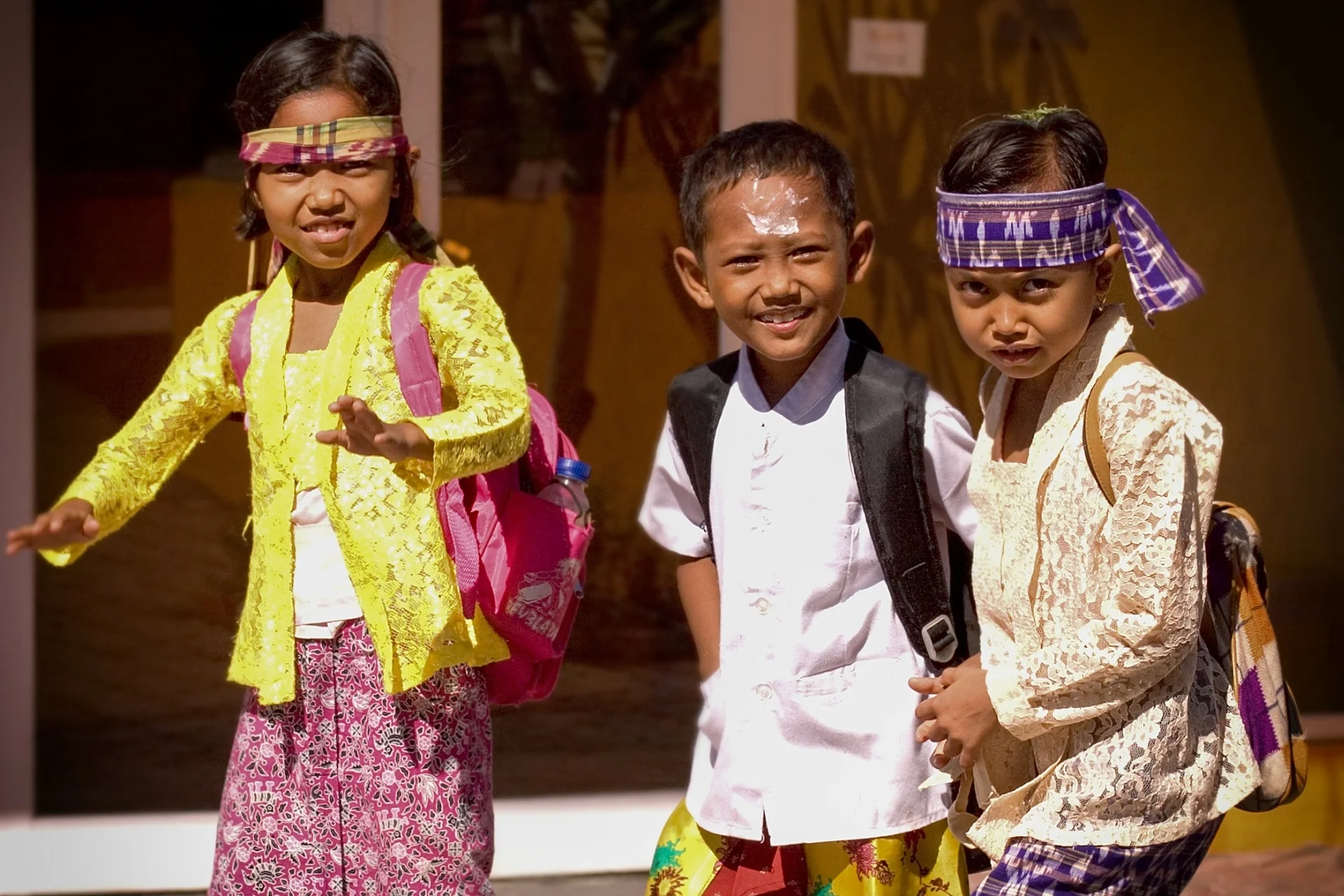Bali is known for its spiritual qualities, with many travellers going there in search of healing and enlightenment.
If you need a place to go to embrace spirituality, Bali will surely welcome you with open arms.
Once there you will experience unique culture and fascinating daily rituals like no other.
To prepare you for your adventure to Bali, we have created a list below of some unusual facts you may not know already about the Island of the Gods.
Fact 1 - Bali is owned by a supreme god
In Balinese religion, the supreme god Sanghyang Widhi owns the land, where he handed it down to the people.
This is why the Balinese dedicate many hours preparing offerings, completing purifications, and temple ceremonies.
Fact 2 - Did you know that Bali is not just one island?
When looking at a map of Bali, it may be easy for you to miss the small islands on the southeast coastline.
Nusa Peninda, Nusa Lembongan and Nusa Ceningan are separated from mainland Bali by The Badung Strait.
Bali’s last population census of the islands totalled just over 45,000!
Fact 3 - Did you know there are four philosophies followed for Balinese architecture?
They are:
A good ventilation system, created by large windows used for air circulation
A solid foundation, based on Tri Loka philosophy that the human body is like a house.
A large garden, so people have ample room to commune with natural surroundings.
A guarding wall, for privacy but also to protect against evil spirits.
Fact 4 - Bali shuts down for one day a year
The Hindu New Year celebration known as Nyepi is mostly observed in Bali and involves the whole island shutting down for the day, even the airport!
Nyepi, is also known as the “Day of Silence” and is used for self-reflection.
The locals will mostly keep all lights off during the celebration, and will also fast – Not eating any food and have the day off work!
Fact 5 - Rice fields are more than just rice field
When visiting Bali, it is guaranteed you will see many gorgeous rice terraces.
These terraces symbolize hundreds of years of spiritual and social culture.
The preservation of Bali crops has progressed with the creation of Subak, a self-sustained socio-religious organization made up of technical, legal, societal, physical and spiritual units working together.
The technical unit allows for equal water to members of Subak to irrigate the land. The legal unit is accountable for sustaining all laws.
The societal and physical encompasses all members, making sure the land and water is of Subak. And the spiritual organizes the appropriate ceremonies needed to ensure the protection of crops, something valued highly in Balinese culture.
Fact 6 - Be careful, directions may be misleading!
In southern Bali, you’ll hear the word Kaja used as the definition of “north.”
However, this definition does not stay constant throughout the island.
When you travel to the more isolated countryside villages, Kaja means “uphill”, most often in reference to Bali’s largest mountain: Mt Agung.
Fact 7 - Did you know that the head is the most sacred part of the body?
When interacting with Balinese locals it is advised that you do not touch their heads.
The Balinese consider the head to the purest part of the body as it is closest to the gods.
This goes for children also, so make sure not to ruffle any children’s hair as it is seen as a lack of respect.
Fact 8 - You can be cleansed by holy water!
One spiritual experience that can be had in Bali is Melukat, a ceremony for purifying the mind and soul.
It is carried out on a ‘good’ day in the Balinese calendar with there being seven different types of Melukat ceremonies for various ailments.
Fact 9 - Don’t forget tour temple etiquette!
When going to visit the beautiful Balinese temples, remember the below;
Feet are considered unclean, so make sure you do not point them in the direction of shrines.
Covered shoulders and a sarong are needed when on holy grounds.
It is seen as rude to have your head higher than the Manku (Priest), so be aware of where you stand or sit.
Due to a concept called ‘Cuntaka’, women who are menstruating are not allowed onto holy sites.
Fact 10 - Meet the youngest Priestess
For decades, High Priests, also known as Ida Pedandas, have always been elderly men between 60 – 70 years of age, born into the highest Braham (a member of the highest, or priestly, class among the Hindus).
However, Ida Resi has been named high priestess at the age of 21, breaking all the traditional rules of age, gender and class.
Fact 11 - Did you know babies in Bali aren't allowed to touch the ground until they are three months old?
During their first few month of birth, Balinese babies are carried everywhere. For their first 105 days their tiny little feet will not touch the ground.
It is believed that newborns are close to the sacred realm from which they came and are therefore considered to be “too holy” to have contact with the earth.
A childs birth in Bali is seen as a rebirth of a deceased relative with ancestors returning as their own descendants.
After 105-210 days (depending where in Bali the baby is born) a coming into the world ceremony is held called Nyabutan or Nyambutin.
In western culture this could be considered similar to a baptism as holy water is sprinkled. In keeping with Balinese ceremonies, food offerings are made to appease demons and entice benevolent sprits to strengthen the child for their next stage of life.
Fact 12 - Buildings in Bali must not exceed the height of a coconut tree
Yes, this is a true fact. This agreement was introduced in the 1970’s that no building should be higher than 15metres.
The maximum height is 3 floors.
This agreement is in alignment with local Tri Hita Karana Balinese Philosophy that explains the three principals for prosperity; harmony amongst people, harmony in nature and the environment and harmony with God.
It is widely acknowledged by the community that this is the maximum height restriction. There is also a belief that coconut trees represent a symbolism between the environment and it’s people, and that first view when visitors reach the island by sea should be coconut trees and not high-rise buildings. We couldn’t agree more!
PS: If you enjoyed this blog click the like button below then share it with those you care for who can also enjoy and benefit from it. 😊












